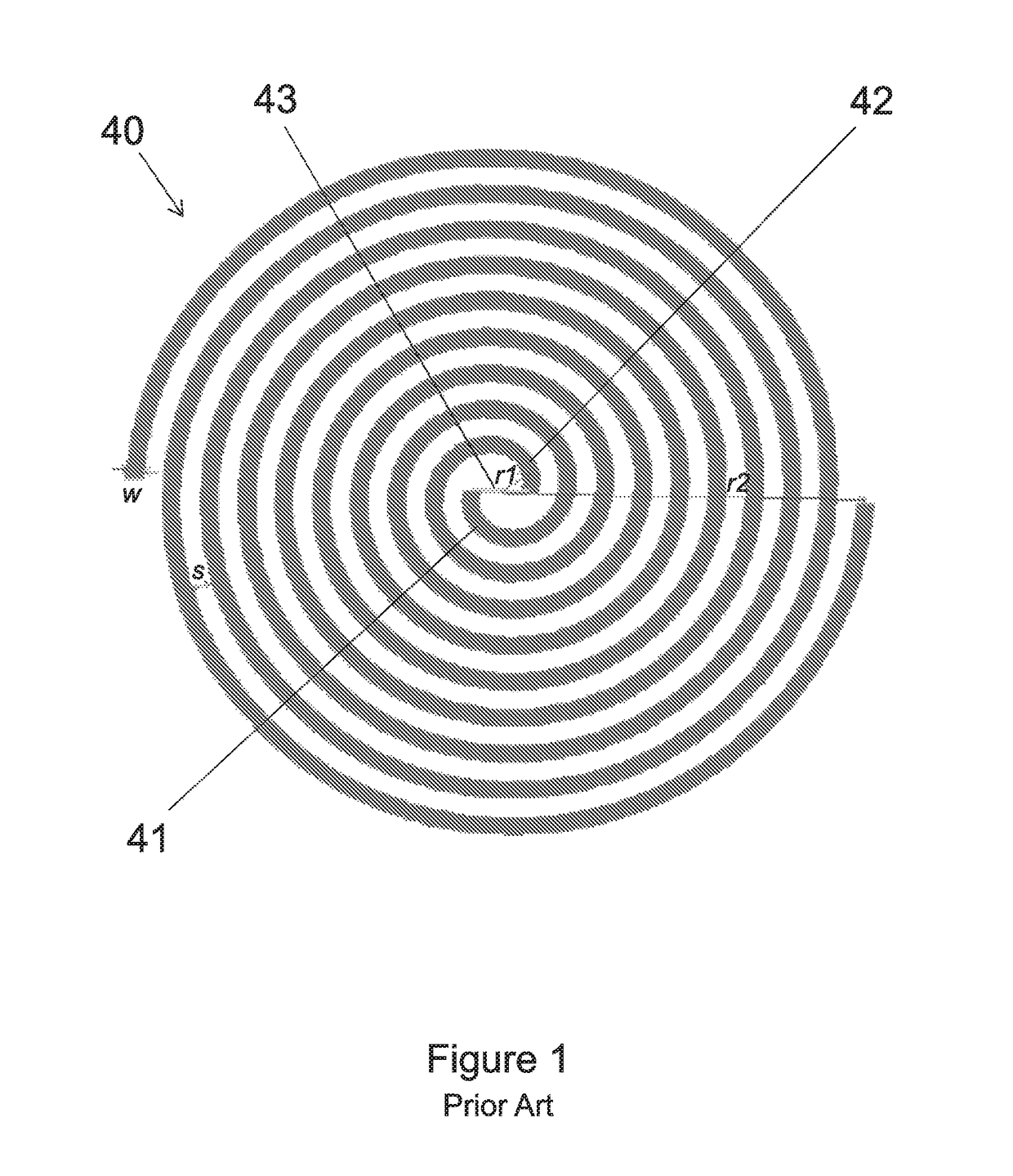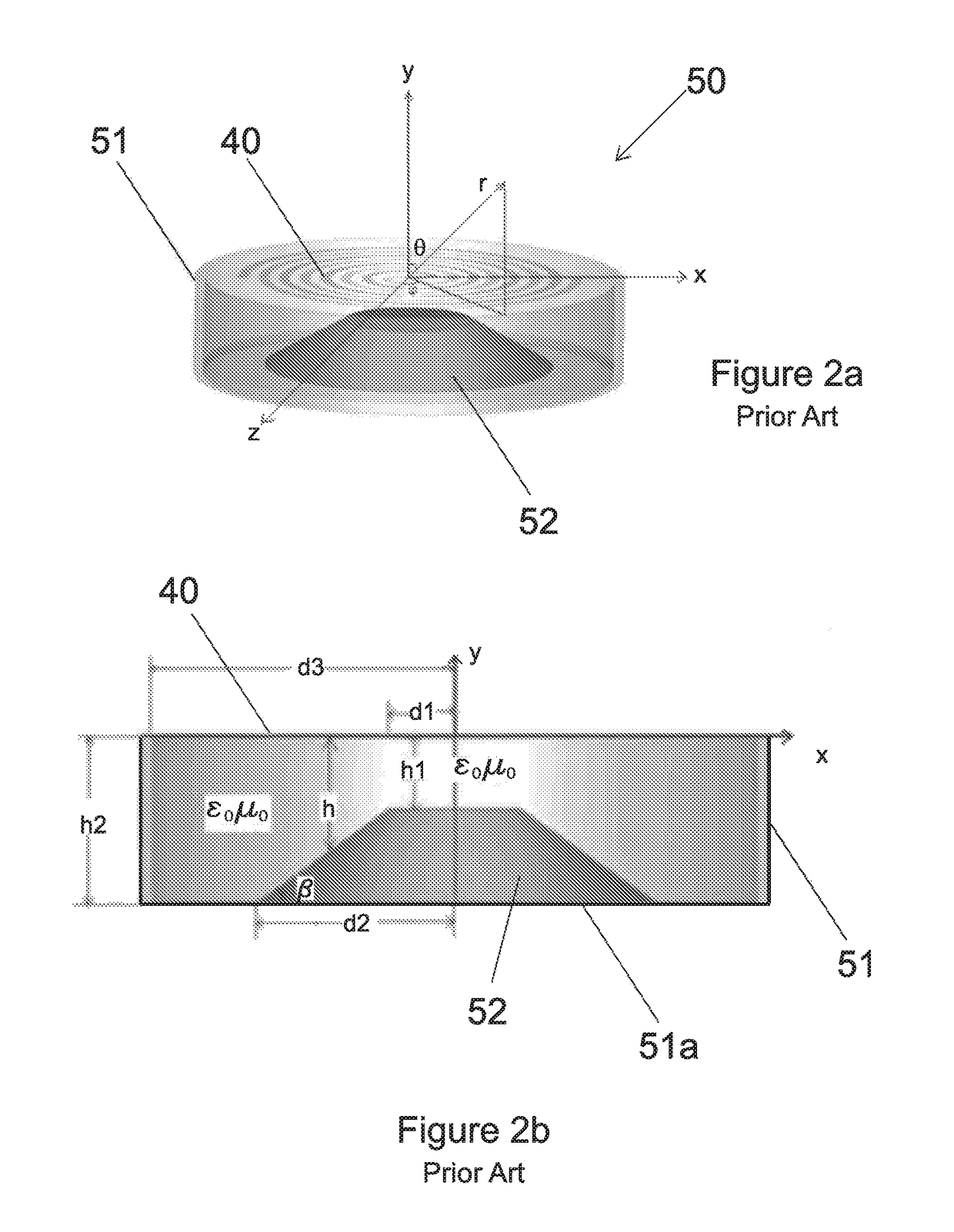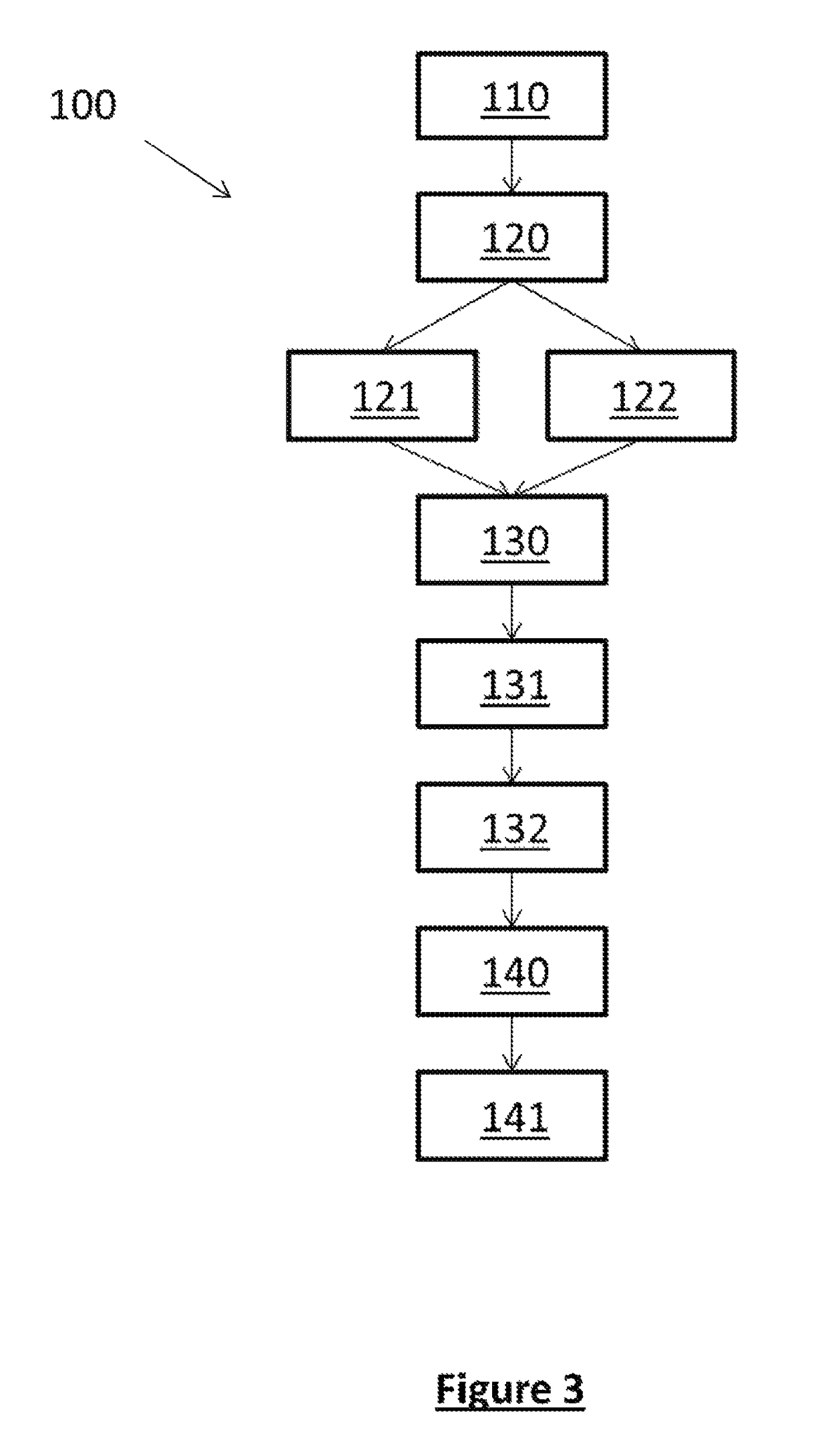Lens design method and radiation source substrate
a radiation source and design method technology, applied in the direction of antenna details, electrical equipment, structural forms of radiation elements, etc., can solve the problems of large bulky, heavy and often expensive, and limited scanning range, and achieve the effect of wide bandwidth
- Summary
- Abstract
- Description
- Claims
- Application Information
AI Technical Summary
Benefits of technology
Problems solved by technology
Method used
Image
Examples
Embodiment Construction
[0039]Referring to FIG. 3 of the drawings, there is provided a schematic illustration of a lens design method 100 according to an embodiment of the present invention, for designing a lens to reshape an actual far-field radiation pattern of a radiation source, such as an antenna or other radiation transmitting device, to a preferred far-field radiation pattern. The lens may be arranged to reshape the radiation pattern by reflecting the radiation in addition to refracting the radiation, and as such, the reshaping of the radiation may be achieved without the radiation passing through the lens. Accordingly, the terms “lens” is understood to comprise a substrate or superstrate, for example, which reflect the radiation, in addition to a more conventional understanding of a lens, in which the radiation passes therethrough. The term lens should therefore be construed as any material which facilitates a reshaping of the radiation pattern.
[0040]The method comprises determining the preferred f...
PUM
 Login to View More
Login to View More Abstract
Description
Claims
Application Information
 Login to View More
Login to View More - R&D
- Intellectual Property
- Life Sciences
- Materials
- Tech Scout
- Unparalleled Data Quality
- Higher Quality Content
- 60% Fewer Hallucinations
Browse by: Latest US Patents, China's latest patents, Technical Efficacy Thesaurus, Application Domain, Technology Topic, Popular Technical Reports.
© 2025 PatSnap. All rights reserved.Legal|Privacy policy|Modern Slavery Act Transparency Statement|Sitemap|About US| Contact US: help@patsnap.com



